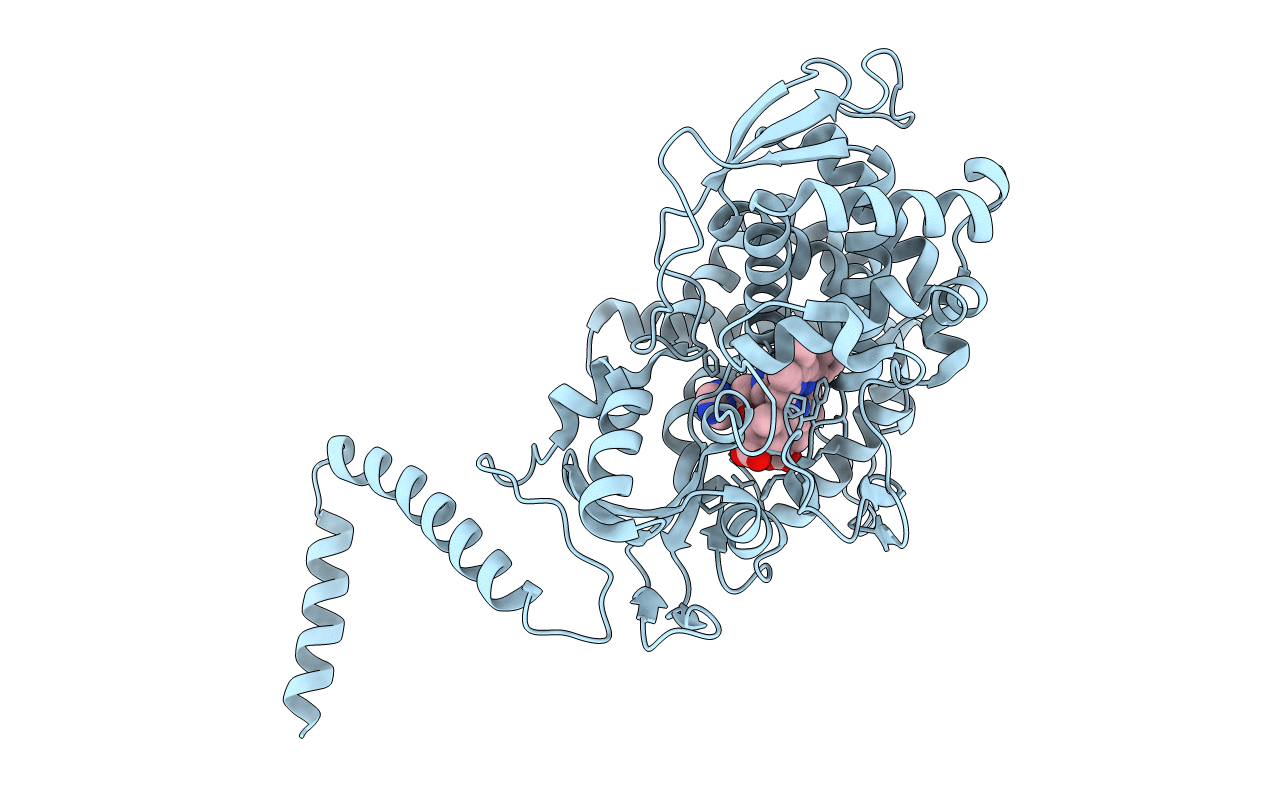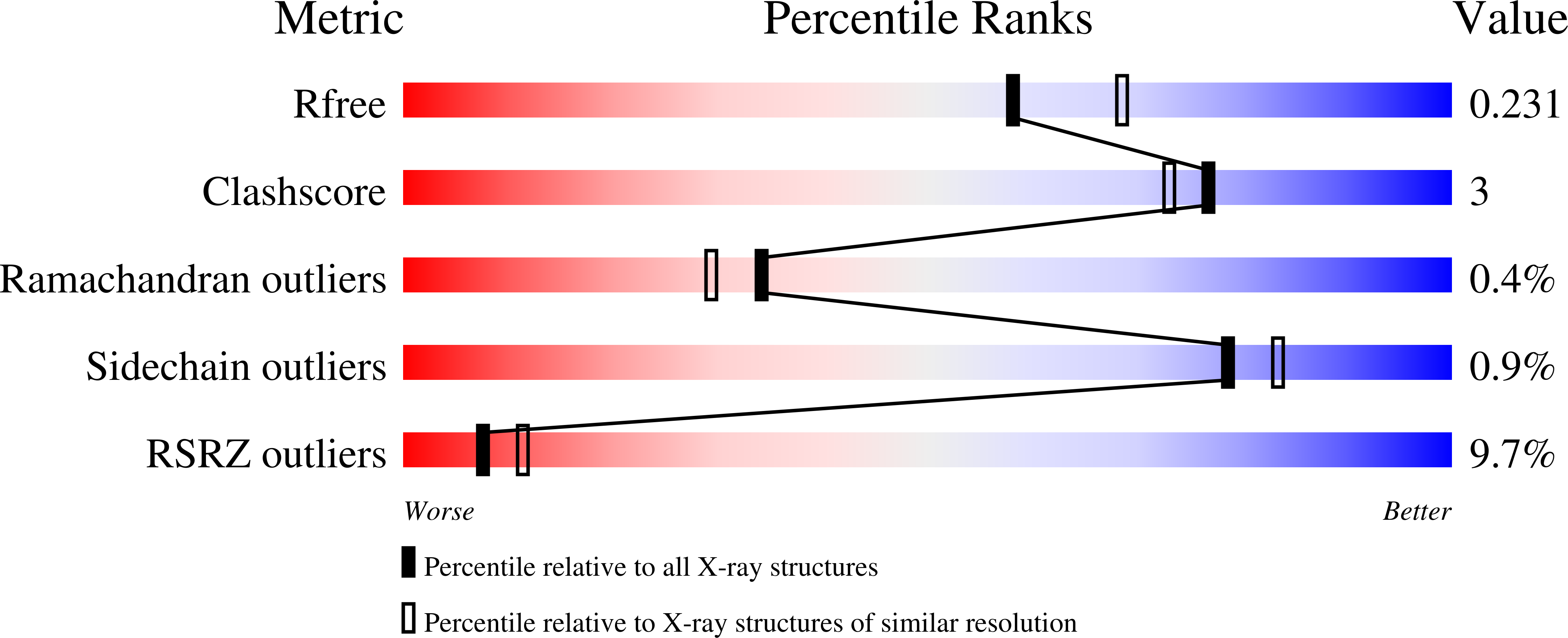
Deposition Date
2015-11-16
Release Date
2016-11-23
Last Version Date
2023-09-27
Entry Detail
PDB ID:
5ESJ
Keywords:
Title:
Saccharomyces cerevisiae CYP51 (Lanosterol 14-alpha demethylase) G464S mutant complexed with fluconazole
Biological Source:
Source Organism:
Saccharomyces cerevisiae (strain YJM789) (Taxon ID: 307796)
Host Organism:
Method Details:
Experimental Method:
Resolution:
2.15 Å
R-Value Free:
0.23
R-Value Work:
0.19
R-Value Observed:
0.20
Space Group:
P 1 21 1


